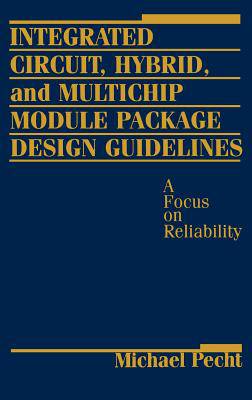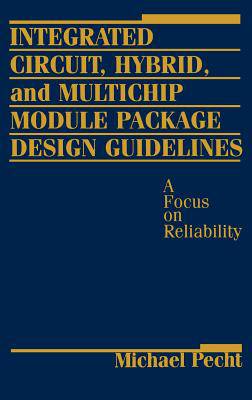
- Retrait gratuit dans votre magasin Club
- 7.000.000 titres dans notre catalogue
- Payer en toute sécurité
- Toujours un magasin près de chez vous
- Retrait gratuit dans votre magasin Club
- 7.000.0000 titres dans notre catalogue
- Payer en toute sécurité
- Toujours un magasin près de chez vous
Integrated Circuit, Hybrid, and Multichip Module Package Design Guidelines
A Focus on Reliability
Michael G PechtDescription
Circuit designers, packaging engineers, printed board fabricators, and procurement personnel will find this book's microelectronic package design-for-reliability guidelines and approaches essential for achieving their life-cycle, cost-effectiveness, and on-time delivery goals.
Its uniquely organized, time-phased approach to design, development, qualification, manufacture, and in-service management shows you step-by-step how to:
- Define realistic system requirements in terms of mission profile, operating life, performance expectations, size, weight, and cost
- Define the system usage environment so that all operating, shipping, and storage conditions, including electrical, thermal, radiation, and mechanical loads, are assessed using realistic data
- Identify potential failure modes, sites, mechanisms, and architecture-stress interactions--PLUS appropriate measures you can take to reduce, eliminate, or accommodate expected failures
- Characterize materials and processes by the key controllable factors, such as types and levels of defects, variations in material properties and dimensions, and the manufacturing and assembly processes involved
- Use experiment, step-stress, and accelerated methods to ensure optimum design before production begins
Detailed design guidelines for substrate...wire and wire, tape automated, and flip-chip bonding...element attachment and case, lead, lead and lid seals--incorporating dimensional and geometric configurations of package elements, manufacturing and assembly conditions, materials selection, and loading conditions--round out this guide's comprehensive coverage. Detailed guidelines for substrate...wire and wire, tape automated, and flip-chip bonding...element attachment and case, lead, lead and lid seals--incorporating dimensional and geometric configurations of package elements, manufacturing and assembly conditions, materials selection, and loading conditions--round out this guide's comprehensive coverage.
Spécifications
Parties prenantes
- Auteur(s) :
- Editeur:
Contenu
- Nombre de pages :
- 464
- Langue:
- Anglais
Caractéristiques
- EAN:
- 9780471594468
- Date de parution :
- 31-03-94
- Format:
- Livre relié
- Format numérique:
- Genaaid
- Dimensions :
- 164 mm x 243 mm
- Poids :
- 839 g

Les avis
Nous publions uniquement les avis qui respectent les conditions requises. Consultez nos conditions pour les avis.






